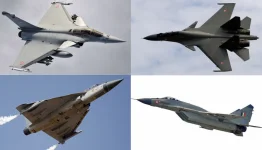
India is strengthening its capabilities across all domains – land, sea, air, and cyberspace – to deter Chinese territorial aggression.
Analysts note these efforts have been successful since 2020 in preventing the land grabs that were once common along the India-China border. This response comes amid growing public awareness within Southeast Asia about China's destabilizing actions and predatory practices.
Indian officials, including External Affairs Minister Subrahmanyam Jaishankar and Defence Minister Rajnath Singh, have openly criticized China's expansionism. This marks a departure from the more cautious approach historically favored by ASEAN nations, with the exception of the Philippines.
Global Pressure on China Mounts
Mounting concern over China's actions is also evident within the US, the UK, and the EU. Public pressure is forcing some political leaders previously known for appeasing China to adopt a firmer public stance. However, this hasn't prevented figures like US Treasury Secretary Janet Yellen from advocating for reduced or removed tariffs on China, demonstrating mixed policy signals from the West.Despite this hesitancy, rising public sentiment against China's expansionism is evident. This could lead to more substantive actions to counter the PRC's aggressive moves.
India's Role and the Indo-Pacific
India's efforts to strengthen its defence capabilities are closely watched by countries across Southeast and East Asia. Nations like Japan, South Korea, Taiwan, Vietnam, the Philippines, Malaysia, and Indonesia are all preparing for potential conflict with China.President Xi Jinping's abandonment of Deng Xiaoping's cautious foreign policy signals a new era of assertive Chinese actions. It's no longer a question of if a major confrontation will occur, but when.
China's Pattern of Expansion
The 'Xi Doctrine' promotes a pattern of intimidation and aggression to secure territory and control strategic spaces. This is followed by periods of diplomatic overtures to lull the targeted country into complacency – until the next act of aggression.Tibet, Inner Mongolia, and Xinjiang are historical examples of this approach. In the current era, Xi aims to expand his reach into other territories like Bhutan, Nepal, and India, while also solidifying control over the ASEAN (South China) Sea.
China is also eyeing Russian territories in Siberia, citing historical claims while simultaneously infiltrating these regions with Chinese citizens. This mirrors patterns seen in other areas of China's expansionism.
The Weakening of Russia
China stands as a key beneficiary of the Russian war against Ukraine. Experts believe China is actively working to destabilize Russia through disinformation campaigns, furthering its long-term goal of weakening Russia to a point akin to the 1991 Soviet collapse. President Putin seems aware of this strategy and is resisting Chinese pressures to harm India.The Importance of the Quad and India
Within the West, there remains a network of pro-China influencers. However, unfolding events make the urgent need for the Quad security alliance increasingly evident.India, under Prime Minister Modi, is likely to play a central role in countering China's destabilizing expansion within the western Indo-Pacific.


